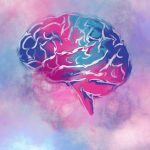
Certain gene mutations put women at high risk of breast cancer, and now an early study hints that obesity might make matters worse. The findings come from a study of breast tissue samples from women who carried particular mutations in genes called BRCA1 and BRCA2 — which convey much higher-than-normal risks of both breast and ovarian cancers. The researchers found that among women who were obese, healthy breast tissue showed more signs of DNA damage that can promote cancer. The findings, published Feb. 22 in the journal Science Translational Medicine, do not prove that obesity exacerbates the already high breast cancer risk in women who carry BRCA mutations. But they do raise that possibility, according to senior researcher Kristy Brown, an associate professor at Weill Cornell Medical College, in New York City. If so, that would mean that maintaining a healthy weight might mitigate some of the cancer risk that BRCA mutation carriers face. Brown’s team also found hints of another potential avenue: In lab experiments with carriers’ breast tissue samples, they found that exposing the tissue to the diabetes drug metformin reduced signs of DNA damage. “We definitely need more studies to see whether lifestyle interventions, or metformin, can lower the risk of cancer in these patients,” Brown said. BRCA gene mutations are not common: In the United States, about 1 in 500 women… read on > read on >
























-300x200.jpg)













